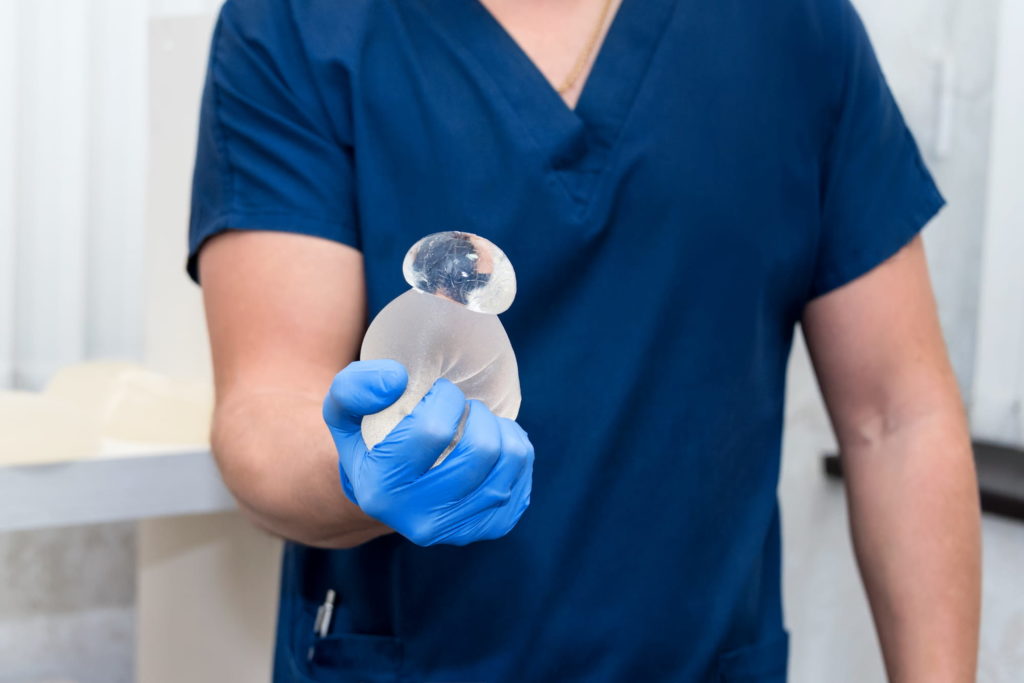Breast implants, like all products, have a lifespan. They age slowly, and as they get older, the risk of an implant-related complication gets bigger. The exact time at which they should be considered “too old,” however, is not an exact science. This can lead to significant confusion when patients try to figure out whether or not to switch them after a certain number of years. Sometimes, it is a pure judgement call, but there is a way to be systematic about it.
For one, breast implants come with an expiration date. This is not the date at which they start to go bad like sour milk, but rather a date after which the box that contains them is no longer guaranteed to be sterile. The packaging that the implant comes in, itself, can wear down and start to let air and bacteria in. That is why there is a date on the box, and it is usually somewhere within 2 years of manufacture
Once the implant is implanted, then the clock restarts in terms of timing to replace the implant. As long as everything heals well, the implant should be well covered and protected from the outside world. There are bacteria inside the breast however, and these can ultimately begin to cause problems. But for the most part, breast implants can do very well for a long time after their initial implantation.
The implant shell on almost all implants is solid silicone. It is mostly inert, but recent data shows that it can react to some degree with the immune system and with local bacteria. It, too, wears over time, and gets softer the longer that it is in the body. Speaking from personal experience, I have removed implants that were anywhere from a few weeks to 42 years old, and I can tell you that the older the implant, the slimier its shell is. To me, this is evidence that the shell weakens, and eventually starts to let fill out, even if it is little by little.
Because of the weakening of the shell, implants are more likely to rupture over time. Most implant manufacturers report the implant rupture rate at 10 years’ time. This can vary from 8-15% depending on the report. After that, the number gets much higher, making rupture a significant concern. For silicone implants in particular, ruptures can be silent, meaning that the breast does not go flat, and the patient has no symptoms, and therefore has no idea that the implant is compromised. In cases where the silicone has gotten out of the shell, especially if it is not cohesive, this can mean a huge and very difficulty to clean up surgical mess.
Other complications from breast implants include capsular contracture, the condition when the scar that forms around the implant gets hard and tight. This is likely due to chronic inflammation, and it too becomes more likely over time. While most contractures form early in the life of an implant, the chance of having one if the implant stays in for an extended period makes it a lot more likely.
In some cases, the implant may have already declared itself unfit. It may be malpositioned or uncomfortable, or the patient may want a different type or size. There are many reasons why patients exchange their implants after all. But with the exception symptoms or a desire for change, if the implant is sitting there quietly bothering no one, it can be difficult to rationalize removing it.
When my patients ask me if they should exchange their implants, I tell them it depends. For silicone implants, I usually recommend switching them out after 10 or 12 years, assuming all else is well. If the implant is intact, this is a quick and easy procedure; so you are better off doing it when things are stable and uncomplicated. For saline, I usually recommend 12-15 years. Although the leakage issue is less of a concern, for me personally, I don’t like the idea of that same water sitting there for an extended period of time. Nothing is really truly completely sterile, and for whatever small amount of contaminant may be floating in the water, any air coming in or particle getting out could lead to issues going forward. This too is quite straightforward under controlled conditions.
Finally, there is concern that some implants have significant potential health concerns, and there may be a role for removing them now that we know about it. For example, textured breast implants have been linked to a rare but serious condition called ALCL, and I usually recommend removing them at any age.
By and large, patients who ask different surgeons will get different answers on both when and whether to switch out their implants. For my practice, I try to temper clinical judgment with scientific data. There is in fact no absolute answer on this, and so you are best off finding a surgeon that you trust, and following their guidance. But if the question is whether or not you could tell without knowing how long an implant has been in the body, the answer is almost always yes. Things get old, and there is a lot to be said for a periodic refresher.


